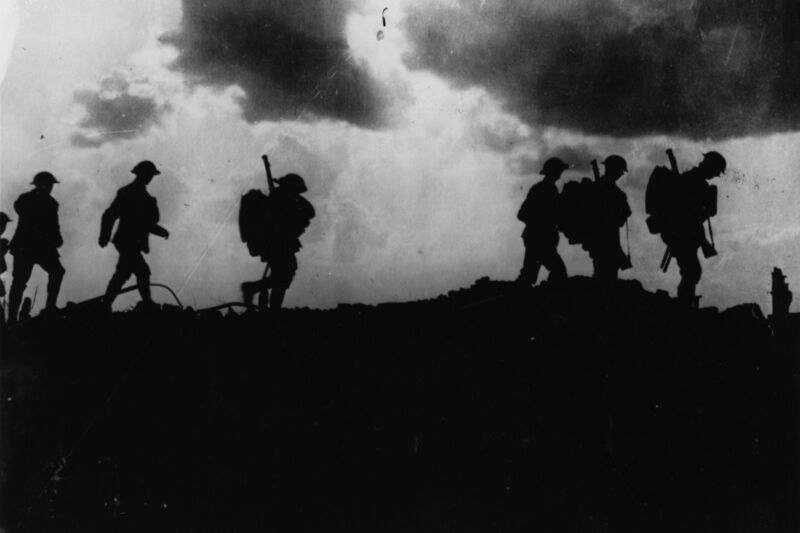Meet Harold Gillies, the WWI surgeon who rebuilt the faces of injured soldiers

Enlarge / British troops moving to the trenches east of Ypres in October 1917. A new book by historian Lindsey Fitzharris explores the stories of those soldiers who suffered severe facial injuries, and the pioneering surgeon who rebuilt their faces: Harold Gillies. (credit: Hulton Archive/Getty Images)
In August 1917, a World War I British soldier named John Glubb was hit in the face by a shell. He recalled blood pouring out in "torrents" and feeling something akin to a chicken bone moving around his left cheek. It turned out to be half of his jaw, broken off by the impact.
Glubb wasn't the only unfortunate WWI soldier to suffer a disfiguring facial injury. Shells filled with shrapnel were designed to inflict as much damage as possible, and the need to peer over the parapets of trenches to assess the battlefield or fire a shot meant a greater risk of getting hit in the face by bits of flying metal. Unlike losing a limb, these soldiers faced great social and professional stigmas when they returned home from the front because of their disfigurement. They were usually reduced to taking night shifts and relegated to special blue benches when out in public-a warning to others to avert their eyes.
Fortunately for these men, a New Zealand-born surgeon named Harold Gillies devoted his life to developing innovative techniques for reconstructing faces after witnessing the carnage firsthand during his service at the front. Once home, he set up a special ward for soldiers with facial wounds at the Cambridge Military Hospital in Aldershot, eventually convincing his superiors that a dedicated hospital was warranted. He's often referred to as the "father of plastic surgery" because of his pioneering work at The Queen's Hospital (later renamed Queen Mary's Hospital) at Frognal House in Sidcup.
Read 37 remaining paragraphs | Comments